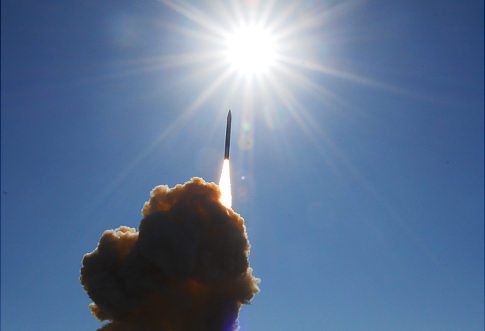Members of the U.S. military and Japan Self Defense Forces teamed up here recently to conduct a week-long exercise focused on operational issues relating to missile defense in the Pacific theater.
Japan Air Self Defense Force Maj. Gen. Masashi Yamada, the director of the Defense Plans and Operations Directorate at the Air Defense Command Headquarters, based at Yokota Air Base, Japan, led a team of air and maritime planners to participate in “Integrated Air and Missile Defense War Game IV.” The 613th Air Operations Center, of Pacific Air Forces, hosted the exercise.
Leading up to the exercise, a joint, bilateral team of military planners from units within PACAF, U.S. Pacific Fleet and U.S. Army Pacific began the planning phase of the exercise, working with Japanese forces to establish a bilateral understanding and baseline for missile defense in the Pacific. This objective aligns itself with the “Treaty of Mutual Cooperation and Security” signed by the U.S. and Japan in 1960, citing the desire to “strengthen peaceful bonds, uphold principles of democracy, further economic cooperation, and promote the inherent right of self-defense.”
“We conducted the exercise because we are continually looking to promote and develop bilateral integration of air and missile defense,” said Maj. Gen. Kevin Pottinger, the mobilization assistant to the PACAF vice commander. “During the entire process, we saw that close integration is the key to success in providing for mutual defense in Japan. We are both far stronger together than we are on our own.”
During the planning and exercise phases, planners from both nations were able to develop a solid foundation for a bilateral defense design, an endeavor Pottinger says should continue to grow and prosper.
“There is no doubt that these are successful early steps, but we have to continue working to foster new ideas,” Pottinger said. “We see this as the great beginning to a journey toward a completely bilateral IAMD command and control structure.”










